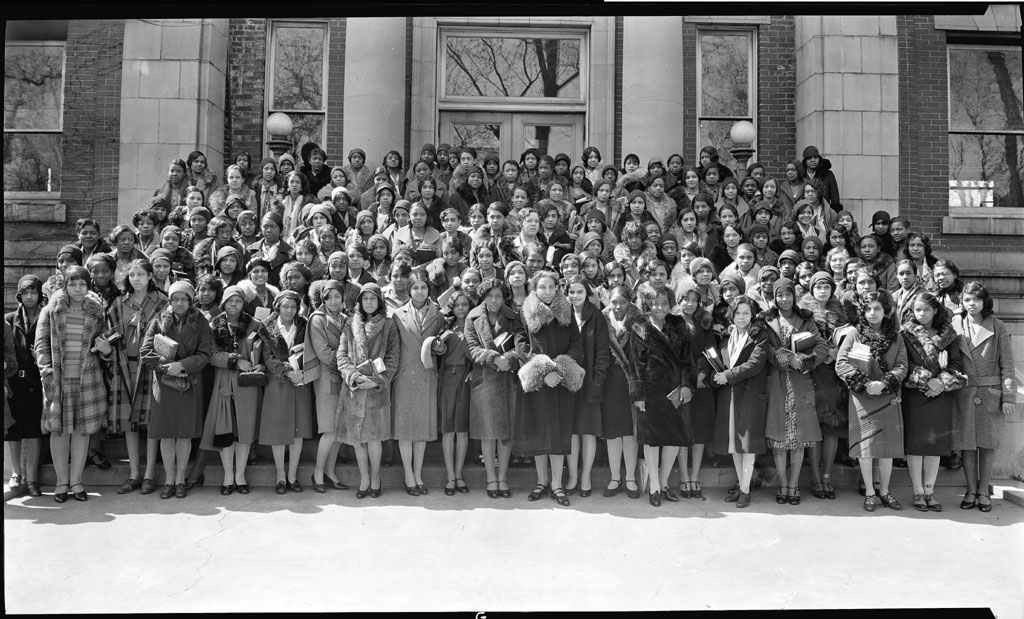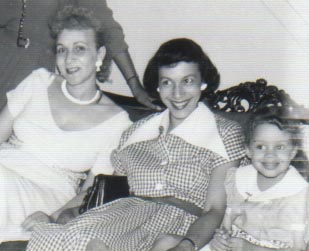| |
At the Congress of Angostura in 1819, liberator Simon
Bolivar was elected president of Venezuela and planned
a strategy that would free the Americas of European
domination. He also found it necessary to clarify America’s
racial heritage: “”It is impossible to say
to which human family we belong.
The lager part of the
Native population has disappeared, Europeans have mixed
with the Indians and the Negroes, and Negroes have mixed
with the Indians. We were all born of one mother America,
though our fathers had different origins, and we all
have differently colored skins. This dissimilarity is
of the greatest significance.”
The
1920s estimate that a third of African Americans have
Indian blood requires new research. Today just about
every African-American family tree has an Indian branch.
The number of Afro-Americans with an Indian ancestor
was once estimated at about one third of the total.
In Latin America the percentage is much higher. This
means that an important page in history has been missing.
Three great races - red, white, and black - built the
Americas together. Their contributions and their interrelationships
have filled libraries with scholarly studies, history
texts, and novels. |
|
Excerpt
from: "Black Indians"
By: William Loren Katz |
In the lower south, mulattoes appeared later and built their
numbers slowly but continuously in the eighteenth and nineteenth
centuries. An important number were born of well-to-do white
fathers, and many of these were recognized and sponsored by
their fathers, sometimes as slaves, sometimes as free. Mulattoes
in the lower South before the Civil War never became so numerous
as those in the upper South, and not nearly so many of them
were free. Yet when they were free, they tended to dominate
the free Negro community both in numbers and influence until
emancipation became general. The topmost few, the lightest and
the brightest, quite literally the crème de la crème,
lived very well- nearly on a par with their white neighbors,
to whom they were tied by bonds of kinship and culture.
It was the elite of the free mulattoes who touched most intimately
the skin of white society. In the upper South, whites came to
regard the lightest of free mulattoes as often dissolute and
difficult people. In the lower South before the 1850’s,
the white elite seemed to value them in important ways. Especially
in South Carolina around Charleston and in lower Louisiana-
the places where free mulattoes were most numerous, most affluent,
and most cultivated- were they appreciated. In the 1850’s
that relatively tolerant order would rapidly deteriorate. But
until then free mulattoes in these enclaves enjoyed a status
markedly elevated above that of the black mass, slave and free.
Free mulattoes
of the more affluent sort in the lower South were treated
by influential whites as a third class, an acceptable and
sometimes valuable intermediate elment between black and white,
slave and free. In the lower South mulatto relations had a
distinct West Indies into eastern Carolina and lower Louisiana
during the first years of colonization and continuing contact
between the islands and the continent. Unlike early settlement
in the Chesapeake world, first settlement in the lower South
was characterized by great plantations employing large numbers
of Negro slaves.
 |
The great number of slaves gave abundant
sexual opportunity to white masters and overseers. Those liaisons
produced children, but not so many as in the upper South because
the number of whites involved was limited to a relatively
small number of white men. Some of these children the masters
cared for and made free. Some they established in trades or
business in the cities. Many remained slaves and filled the
ranks of domestic servants. Over time free mulattoe clans
emerged, especially in Charleston and New Orleans, interlocking
rings of families almost as prosperous, nearly as cultured,
and fully as exclusive as those of their planter kin. Just
as the planter class dominated white culture, the elite free
people of color dominated free Negro culture.
Mulatto planters
in Louisiana were an impressive group, but it was in New Orleans
that the continuing interchange between blacks and whites,
sexual and otherwise, reached the highest and most fascinating
level.
 |
As in Latin
America, there was a steady surplus of whites males and mulatto
females in the city. So common was mixing among the elites
of both races that it came to be institutionalized in “quadroon
balls.” These were regular and public affairs at which
he agreed to maintain the woman in a certain style and provide
for any children who might be born of the union. If his offer
was accepted, the woman was established in a household of
her own, less than a wife and a bit more than a concubine.
Sometimes the arrangement evolved into a permanent one; more
often it endured a matter of months or years. Liaisons also
occurred between white woman and mulatto men, but, true to
the Latin pattern, these were notably less frequent.
The period between
1850 and 1915 marked a grand changeover in race relations
in America. It was a time in which America switched form what
might be called a slave paradigm of race relations to one
that was characterized by separation and greater freedom.
Essentially,
what happened in the changeover was that the dominant white
society moved from semiacceptance of free mulattoes, especially
in the lower South, to outright rejection. As mulatto communities
in the 1850s confronted an increasingly hostile white world
implementing increasingly stringent rules against them in
the form either of laws or of social pressures, they themselves
moved from a position of basic sympathy with the white world
to one of guarded antagonism. In the movement the mulatto
elite gave up with alliances and picked up black alliances.
The change accelerated in the Civil War, took its set during
the critical year 1865, and continued through Reconstruction,
post-Reconstruction, and into the twentieth century.
By the end of
the period, roughly in the two decades between 1905 and 1925,
mulattoes led by the mulatto elite had allied themselves rather
totally with the black world. Meanwhile the white world had
arrived at an almost total commitment to the one-drop rule.
In white eyes, all Negroes came to look alike.
The great fact
about mulattoes that emerges form a comparison of the census
of 1860 with that of 1850 is a massive increase in the number
of mulattoes who were slaves. During the decade of the 1850’s
slavery was becoming whiter, visibly so and with amazing rapidity.
White people were enslaving themselves, as it were, in the
form of their children and their children’s children.
While black slavery increased in numbers only 19.8 percent
in the decade, mulatto slavery rose by an astounding 66.9
percent. The raw number of slaves visibly mulatto grew impressively
from 247,000, to 412,000, and their percentage in the total
slave population increased from 7.7 percent to 10.4 percent.
Mulatto freedom
was the other side of the coin, and the statistics there offered
no encouragement. In the South the count of free mulattoes
hardly grew at all, rising from 102,000 to 107,000. Without
doubt, some mulattoes had gone underground and others had
fled.
The total number
of mulattoes, rising form 406,000 to 588,000, was keeping
pace with the increase of population in the United States
as a whole, but the rapid rise in mulatto slavery and the
less than average increase of free mulattoes portended a dismal
future for mulattoes in America.
Mulatto slavery
gaining strength throughout the South in the 1850’s,
but publicly white people seemed unconcerned about white blood
mixing with black and being held in slavery. On the other
hand, they went into a rage against white blood mixed with
black and being free. During the decade whites attacked the
free mulatto population in the South with unprecedented virulence.
As the lower South joined the upper South in the assault on
free mulattoes, the line between the two, the line that had
been formed by a Latin-like tolerance of mulattoes in the
lower South, tended to dissolve.
|
|